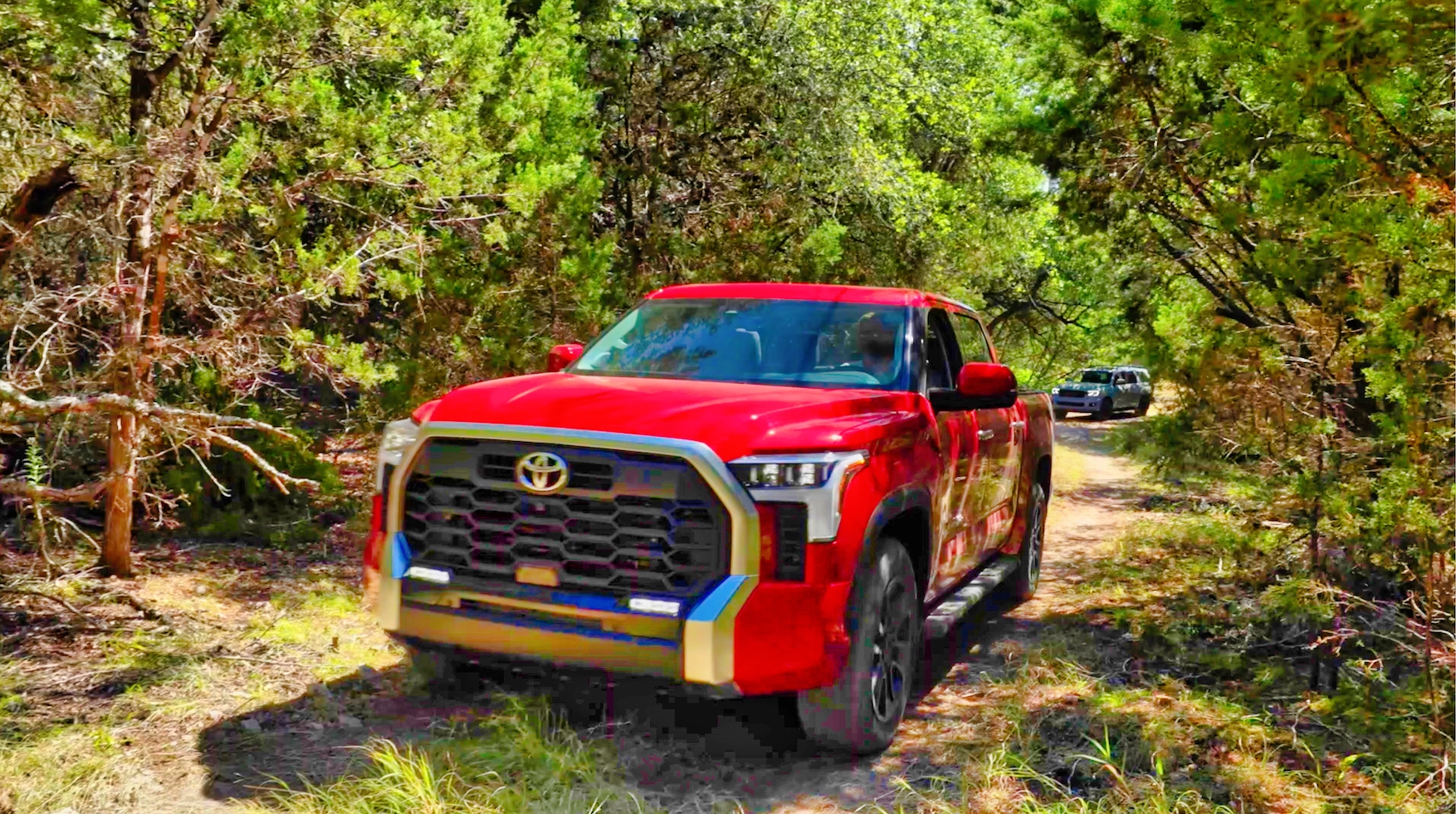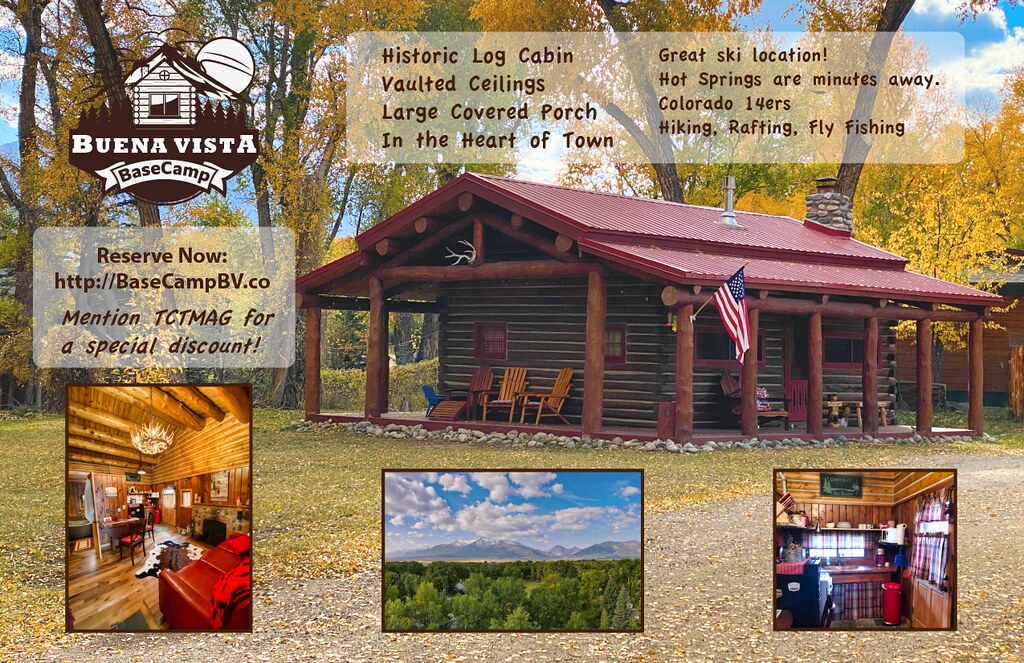We used to say that Toyota’s were a 300,000 mile vehicle, but let’s face it, it’s getting to the point where we have all heard of someone that has hit a million miles, survived a forest fire while saving lives, or simply survived a crash with their Tundra. With Toyota finally introducing their next generation of the Tundra, how do they attempt to top what they have already done? What the heck; let’s listen to customers. Why not... A complete redesign it is.

- Masculine lines - check
- Sleek and comfortable interior - check
- Aggressive stance - check
- More Power - check
- Bigger and more user-friendly Infotainment system - check
- How about an E-Locker? - check
- FUEL Mileage!!! - potentially best on the market definitely gets a check+

Starting from the ground up, they created an entirely new complete boxed frame that, with a few modifications during the building process, will be the platform for the Tundra, Sequoia, Tacoma, 4Runner, and Land Cruiser of the future. While designing this new frame, Toyota took the design a step further and created a world’s first in auto manufacturing; a “curved linear weld”. I have never seen a robotic weld look so clean and effective.

The big shock for this year is it is the first time in the 22 years of Toyota building the Tundra there will not be a V8 as an option for the power plant. Instead, they decided to follow the lead of the full size truck market and create their own two versions of a twin turbo V6. The I-Force twin turbo 3.5 liter V6 kicks out a substantial 389 Horsepower and 479 lb-ft of torque. The I-Force Max however, steals the show with 437 Horsepower and 583 lb-ft of torque. Toyota has created a unique system that puts the Electric Motor/Generator smack dab between the engine and transmission to give this system a “Pure Mechanical Connection from engine to the wheel. And you want to talk about responsive? I did find the new 10 speed transmission to be quite smooth on road, off road, and even towing a heavy load. I was expecting to hear and feel a lot of shifting, but it seemed indiscernible. To round out the drivetrain, Toyota finally offers an actual E-Locker as an option on certain trim levels. One thing that I did not touch on yet is the fuel economy. The I-Force in 4X2 is reporting a 18 city/23 highway/20 combined. The I-Force 4X4 is reporting 17/22/19. With that said, the I-Force Max fuel economy has not been published yet.

Toyota did add a couple of the “less than experienced driver” features that will be quite helpful when towing. They have created a couple of different smart towing settings and back up assistance button that are going to get a lot of use. As the smart towing settings go, one is for lighter and one for heavier towing. The Tow/Haul mode adds throttle response to help when hauling smaller trailers. The Tow/Haul+ mode adds more throttle response for heavier trailers and campers.
At the test drive we were given three different combinations to experience:
- 2021 1794 with sway bars and a double axle camper
- 2022 Platinum I-Force Max with a double axle camper weighing almost 2000 lbs more
- 2022 SR-5 with the I-Force and a short single axle camper
- I did drive all three and the 2021 handled exactly how I expected it to. It bucked where I thought it was going to, and it got squirrelly where I thought it would. Then I got in the 2022 with the heavier camper that had no sway bars, but did have airbags.
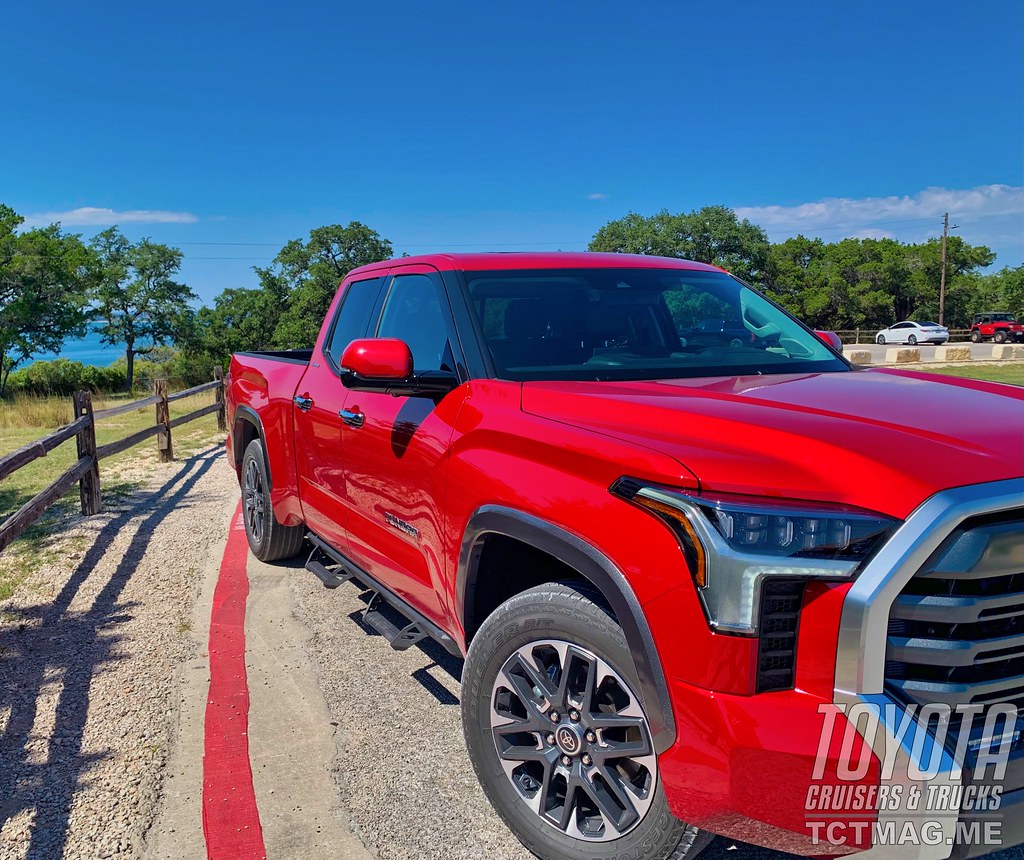
Now, taking the exact same route I was going to try to make this truck behave the same as the outgoing model. It simply did not behave the same. Where I thought it should buck, it did not. Where I thought it would get squirrelly, it did not. With the added horsepower and torque this truck ate up the large hill and accelerated up the entire climb. Then I got in the SR-5 hauling the shorter single axle camper that was lightest of the three. Here I was trying to make the combo buck and get squirrelly. Again, I was extremely impressed with what Toyota has come up with. Apparently, the lane departure assist in the steering is used in conjunction with all of the new camera systems during the smart towing settings to help the truck fight the trailer from tail whipping and the ABS is being used to automatically counteract the trailer from bucking in fast deceleration. Now you add in the backup assist function that will all but back up the trailer for you, and literally anyone can haul and back up their own trailer. One little side note on the airbag system; you can manually lower the bed of the truck 1” for ease of loading heavy items into the bed. You can also raise the bed by 1 1/2” to get a little more ground clearance if needed.
I was not really surprised to see that Toyota switched to the composite bed like they have in the Tacoma. It is durable and reduces some weight in the grand scheme of things.

Being a complete redesign Toyota gave this truck some real personality. Trucks today do not seem to be very aerodynamic, but the Tundra seems to have a little more rake to the hood and gives it better road visibility. As the grille goes, every trim level has it’s own grille. If there is a knock so far, it would have to be that they are not putting a hood scoop on the sport model anymore and no it will not be an option on any models in the near future. If they are not going to be functional...
When it comes to the interior, of course Toyota has upgraded here too. Of course the drivers seat has all of the electronic adjustment options, but now the passenger front seat does as well. For all new features, I’m not sure if I liked the Panoramic sunroof or the 12” digital dash cluster more since they are both game changers. The seats and the materials have all been upgraded, and are more comfortable than ever. The camera system was also impressive! You now have a 360-degree view around your truck with the optional setup. When you’re in 4 low, you can have a perspective view of what a rock camera would see. It was quite helpful on the off-road course when testing out the crawl control and when crawling over the log obstacles.
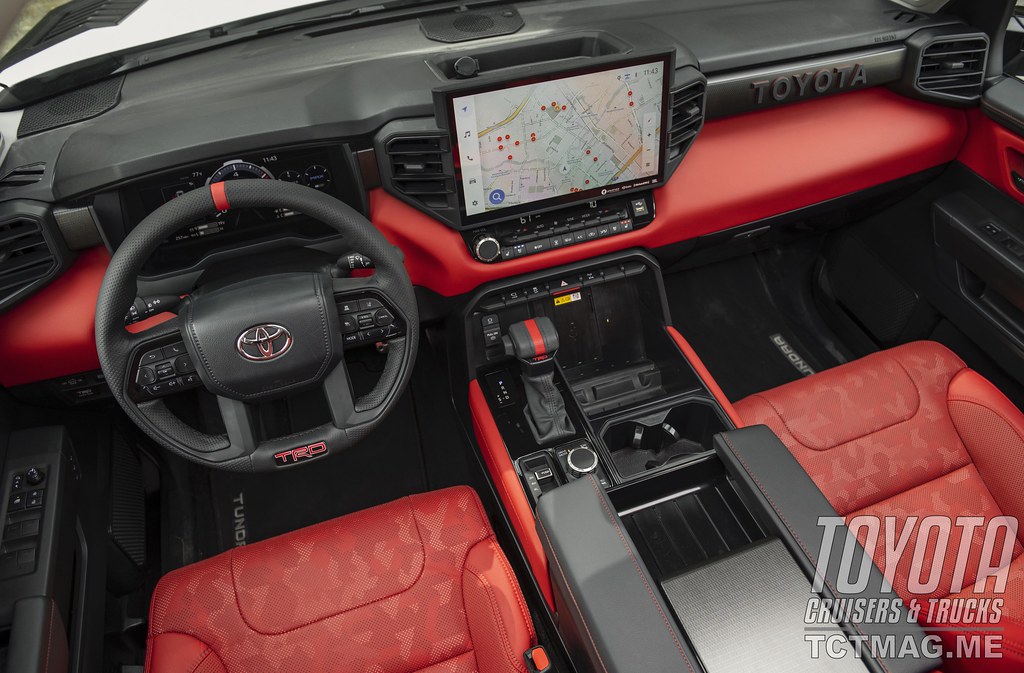
By the way, the truck ate up every obstacle like a champ! I expected the truck to handle the course easily, and it did. The added horsepower and more torque in the low end will always make it easy to drive on these types of test course. I will say that I cannot wait to see what this truck will do when we really take it off road in the coming months. I thought the 14” screen was going to be a bit distracting, especially for the off-road course, but it was not. The larger screen was great during the road testing. The new screen and all the upgraded features were really easy to maneuver through.
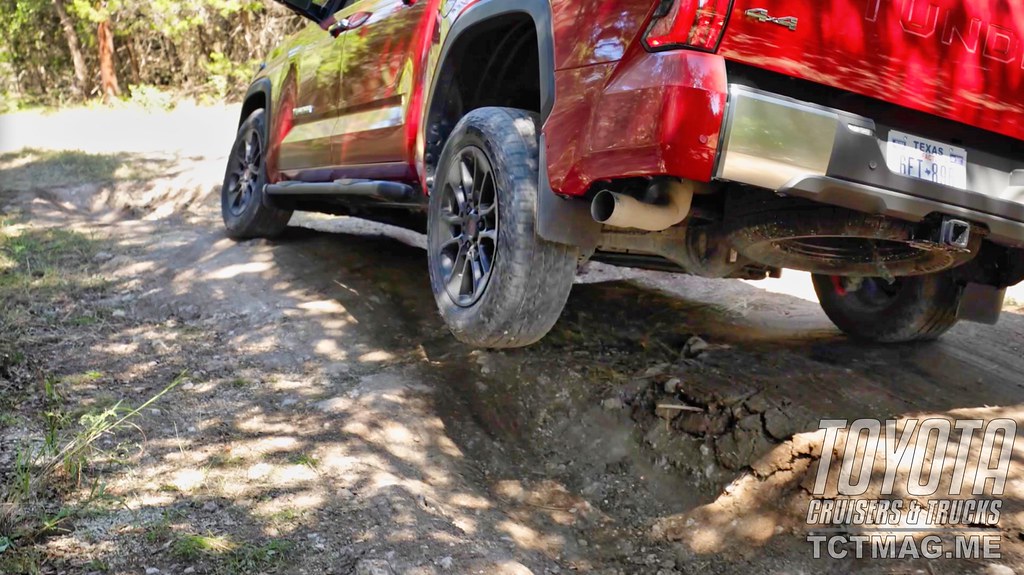
During this event the only place that we got to test drive the TRD-PRO was at the off-road course. The course was somewhat tame for what this truck is capable of, so obviously it handled everything without batting an eye. It was a smoother ride, as it should, and clearly the TRD-PRO Tundra is built to be a better ride off of the pavement. With the wider stance, the Fox shocks, and all of the creature comforts; the TRD-PRO it is a DREAM!
There was one thing about this truck that absolutely made me laugh: they piped in the sound of a V8 into the cabin when you step on the accelerator. You do not hear it outside the truck but you sure did on the inside. I really noticed it when I had the window open and I got two different sounds.

On the other hand the biggest and only issue that hasn’t been addressed in my mind is the wimpy a/c blower motor. Other than that Toyota has quite literally polished up one of the industry leading, most solidly engineered and built trucks on the market, and made it a real game changer!
I cannot wait to get behind the wheel of the 2022 Toyota Tundra again!
[flickr set=72177720296172115]
To get your copy of the
Fall 2021 Issue:
Follow us on Facebook, Twitter, and Instagram to get up-to-date industry news, events, and of course, amazing adventures, stories, and photos!




